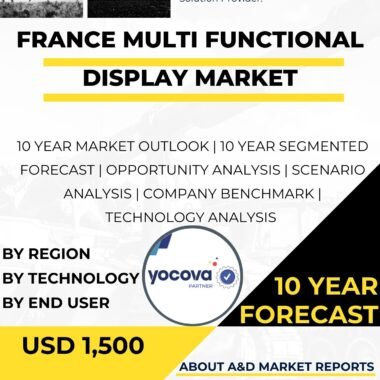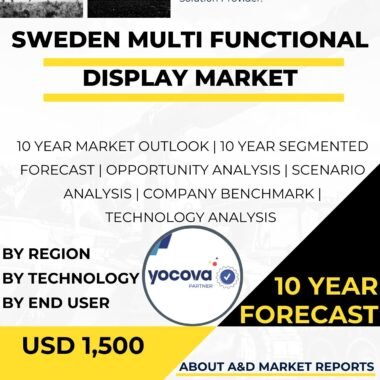Description
Overview of the Australia Multi-Function Display Market
The Australia MFD Market is a vital and expanding part of the country’s defense industry. Multi-Function Displays are advanced electronic screens used in aircraft, naval vessels, and ground vehicles to deliver real-time data to operators. These modern systems enhance the Australian Defence Force’s (ADF) capabilities by improving situational awareness, streamlining data management, and increasing operational efficiency.
MFDs in Aviation Applications
A major use of MFDs in Australia is within military aviation. In aircraft cockpits, they present flight, navigation, and sensor data in a compact and clear format. By combining multiple data sources on one screen, MFDs reduce pilot workload and help them stay focused on mission objectives. The Australia Multi-Function Display Market supports the ADF’s push for advanced cockpit technologies that boost accuracy and safety during missions.
Maritime Applications in the Australia Multi-Function Display Market
The Australia Multi-Function Display Market is equally important in maritime operations. On naval vessels, MFDs are used in combat information centers and command bridges to deliver real-time updates on ship systems, radar data, and tactical information. These displays help commanders make faster, more informed decisions during complex maritime operations, strengthening Australia’s naval readiness and efficiency.
MFDs in Armored and Ground Vehicles
The Australia Multi-Function Display Market also supports the modernization of armored and ground vehicles. MFDs give crews access to live navigation, system diagnostics, and sensor data through an intuitive interface. This visibility improves decision-making during missions and enhances situational awareness in challenging operational environments.
Simulation and Training Support
MFDs also play a crucial role in simulation and defense training. Advanced simulators use these displays to replicate real-world scenarios, allowing personnel to practice missions safely and cost-effectively. This helps the ADF train soldiers and pilots under realistic conditions, improving readiness and performance without the need for live exercises.
Key Market Drivers
Growth in the Australia Multi-Function Display Market is fueled by the need for advanced, integrated display systems across defense platforms. As the ADF modernizes its systems to meet evolving security challenges, MFDs become essential for mission success.
Research and Innovation
Partnerships between defense contractors, technology firms, and academic institutions are key to innovation. These collaborations promote the development of next-generation MFDs with enhanced visual clarity, touchscreen interfaces, and data analytics features. Research in display ergonomics and interface design also improves usability and reduces operator fatigue.
Government Policies and Cybersecurity
Government support and defense procurement programs strongly influence the Australia Multi-Function Display Market. Continuous investment in R&D and acquisitions ensures Australia’s technological superiority in defense systems.
Cybersecurity is another critical factor. As MFDs connect to military networks, securing them from cyber threats is essential. Robust encryption and security measures protect sensitive data and maintain the integrity of defense operations.
Future Outlook of the Australia Multi-Function Display Market
The Australia Multi-Function Display Market is expected to expand further as digital integration and real-time data sharing become vital for defense operations. Future MFD systems will likely incorporate artificial intelligence and augmented reality to improve threat detection and mission coordination.
Conclusion
In conclusion, the Australia Multi-Function Display Market is an essential element of the nation’s defense modernization strategy. MFDs improve operational awareness, enhance decision-making, and support air, sea, and land missions. By investing in new technologies, promoting research partnerships, and strengthening cybersecurity, Australia can ensure that its defense platforms remain advanced, connected, and resilient. These displays will continue to play a key role in improving the ADF’s operational efficiency, training, and mission success across all domains.




